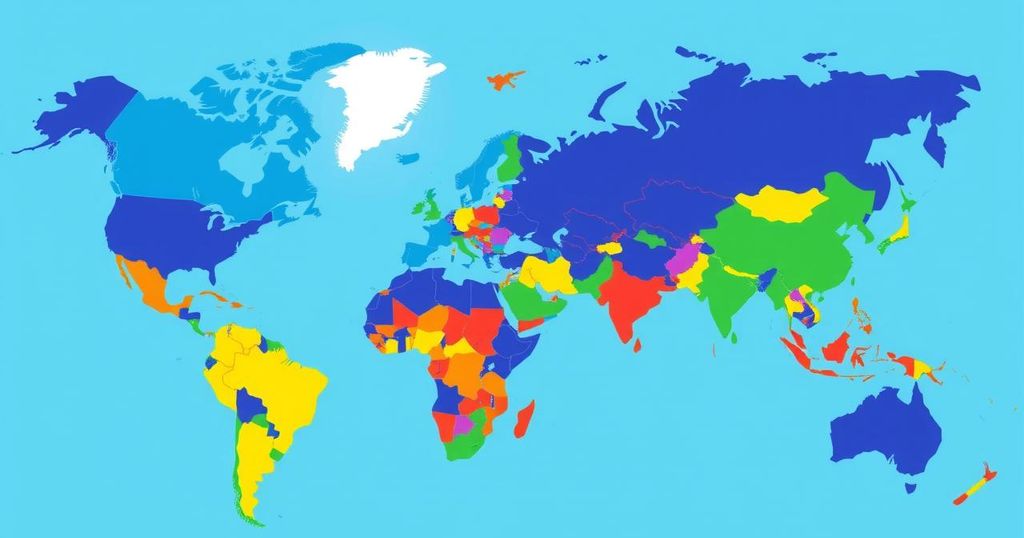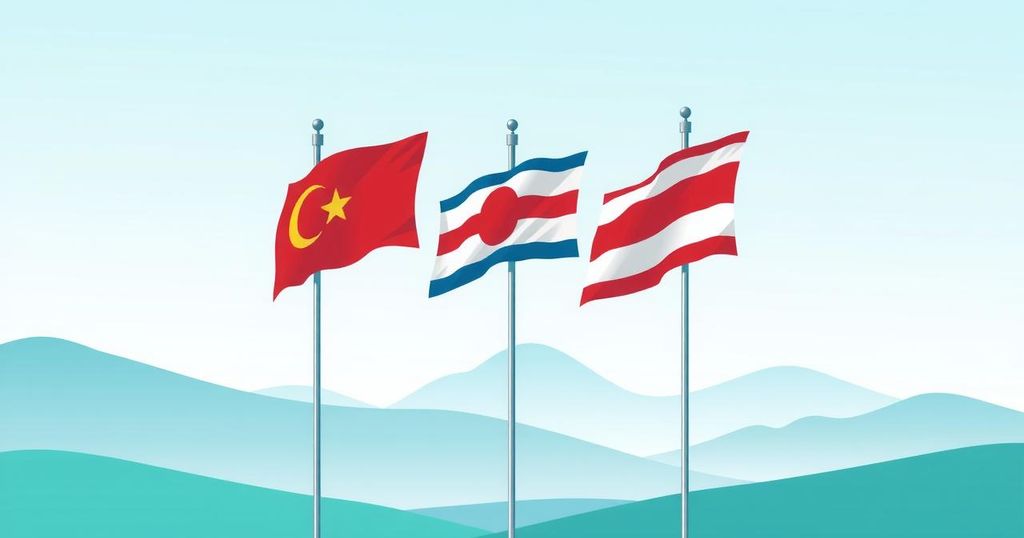President Trump has proposed an expanded travel ban for his second term, targeting forty-three countries through a three-tier system. The plan includes a red list (total ban), an orange list (limited restrictions), and a yellow list (potential future restrictions). The initiative aims to enhance national security by addressing deficiencies in vetting processes in these nations.
President Donald Trump has proposed an expanded travel ban for his second term, encompassing forty-three countries under a new three-tiered framework. This initiative, instituted through an executive order on January 20, directs cabinet officials to pinpoint nations whose citizens may face travel constraints to the United States due to insufficient vetting and screening measures.
This new proposal aims to enhance national security by restricting entry from nations categorized as high-risk, following a previous travel ban from Trump’s first term. The draft plan, crafted by the U.S. State Department weeks prior, remains subject to amendments before its finalization, with ongoing evaluations of the accuracy of the proposed travel restrictions.
The proposed countries are classified into three categories: red, orange, and yellow, each indicating a specific level of restriction.
Red List: Full Travel Ban
The red list identifies eleven countries whose citizens will be wholly banned from entering the United States. These nations possess significant deficiencies in their vetting and screening processes, representing a national security concern.
Orange List: Limited Travel Restrictions
The ten countries on the orange list would not face an outright ban but would be subjected to limited travel restrictions. Individuals from these countries would require supplementary vetting measures, including in-person interviews, to apply for a U.S. visa due to the identified flaws in their vetting procedures.
Yellow List: Potential Future Restrictions
The yellow list includes twenty-two countries, primarily from Africa, which are given sixty days to address the deficiencies identified in their vetting processes. Failure to amend these concerns could result in these countries being classified under the more stringent red or orange lists.
This travel ban proposal reflects President Trump’s ongoing commitment to fortifying U.S. borders and ensuring the safety of its citizens from security threats. The executive order underscores the imperative of precluding entry to individuals who may pose risks related to terrorism, hate groups, or criminal activities. It is worth noting that former President Joe Biden reversed Trump’s travel bans on his first day in office in 2021, citing their inconsistency with America’s historical ethos of inclusivity.
President Trump’s proposed travel ban introduces a new three-tiered system aimed at enhancing national security by placing restrictions on citizens from forty-three countries. With classifications of red, orange, and yellow for various levels of travel restrictions, the proposal builds upon prior measures and emphasizes the vetting deficiencies observed within these nations. It remains a significant development in U.S. immigration policy, particularly in the context of contrasting approaches between the current and previous administrations.
Original Source: www.travelandtourworld.com




